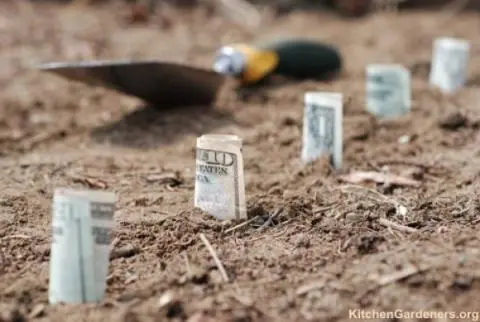Natural State Gardening is a weekly blog about organic gardening techniques.
In many home and community gardening scenarios, space is precious. With 4’ x 8’ garden plots, the Heights Neighborhood Garden is certainly no exception. So, what is the best way to maximize the productivity of such a small space?
In terms of selecting what to plant, there are two layers to consider: the ground layer and the vertical layer. The goal is to fill the ground layer with lower height crops and to fill the vertical space with vining crops that can be trellised upwards above the ground layer.
GROUND LAYER
The ground layer is best composed of crops that grow quickly and/or can be harvested multiple times (“come-and-cut-again”) and/or are expensive to buy. These crops include:
- Lettuce, arugula, spinach and many other leafy greens: Leafy greens are quick growing, can be harvested multiple times, and are often expensive to buy.
- Herbs: Basil, cilantro, parsley, etc. Organic herbs are typically quite expensive to buy, with many herbs costing $3 for a 0.66 ounce clamshell at the grocery store. They can also be harvested many times.
- Radishes: Can grow to maturity in 25-30 days!
- Turnips: Turnip greens are harvestable in about 30 days, while roots take longer: about 60 days.
- Beets: Baby beet leaves are ready to harvest in about 35 days, and beet roots are harvestable around 60 days.
- Carrots: Baby carrots are ready in about 30 days; mature carrots in about 60 days.
- Green onions: Grow in about 30-60 days, and fit nicely between rows of lettuce or other greens.
VERTICAL LAYER
The vertical layer is best composed of vegetables that produce their crop on a vine, and are vertically trellised or caged. These crops include:
- Tomatoes: Indeterminate varieties will produce all summer long.
- Pole Beans: These include Asian winged, asparagus, lima, romano, runner, shell, and snap beans. These are all warm season crops, except the cool-season runner beans.
- Cucumbers: Grow in cages or limit to a single stem and grow up a single vertical support.
- Gourds: Can be grown for eating or decorating.
- Melons: Individual fruits weighing about 2 pounds or less can grow on a trellis without additional support. Varieties with such small fruit include: Minnesota Midget, Ha’Ogen, Charentais, Emerald Gem, and Jenny Lind.
- English Peas: This cool season crop can grow up to 6 feet tall when trellised. Sugar Snap is a popular variety.
- Climbing Spinach: Also known as Malabar spinach, this is a spinach substitute for summertime. Vines can grow 10 feet tall!
- Summer Squash: Though most summer squash is bred to be dwarf and bushy, there are a few vining varieties well suited to growing vertically: Black Forest, Trombone, and Vegetable Spaghetti.
- Winter Squash: These varieties produce small fruit that can grow on a trellis without additional slings or special supports: Buttercup, Delicata, Kabocha, Table Ace, and Waltham Butternut.
- Watermelon: Obviously, most watermelon varieties have much too large fruit to grow vertically. These varieties have much smaller fruit and are suitable for vertical growing: Solitaire Hybrid, Sugar Baby, and Yellow Baby. Seedless varieties (harder to grow): Mini Yellow Hybrid and Snack Pack.
SAMPLE GARDEN: A garden space in maximum production during the summer, for example, might have lettuce, swiss chard, and basil throughout the bed as the ground layer. For the vertical layers, trellised tomatoes, cucumbers, and peas all take advantage of the vertical growing space. Since tomatoes, cucumbers and peas are each from separate plant families, they could be rotated each year as to not grow in the same spot within a 3 year period (for proper crop rotation).
Other tips and notes on maximizing productivity:
- Keep crops harvested so they don’t slow down production
- Propagate plants ahead of planting to get plants closer to harvesting stage before planting in the bed.
- It is not productive or profitable to grow crops that you aren’t interested in or won’t eat, even if they are productive, expensive, and provide repeated harvests.
- The vertical layer is easiest to accomplish in summer, but there are vertical options for cooler weather, too, such as English peas and runner beans.



Comments (0)
Thanks for your comment!
Thanks for your feedback! Your comments have been successfully submitted! Please note, all comments require admin approval prior to display.
Error submitting comment!
There is a problem with your comment, please see below and try again.